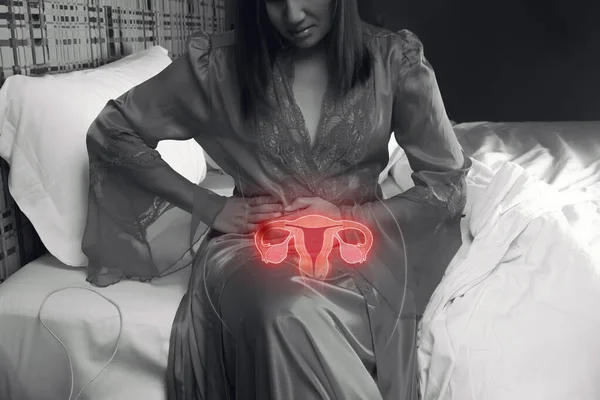Uterine fibroids are non-cancerous growths in the uterus that can affect a significant number of women, especially during their reproductive years. Understanding how these fibroids form, how menopause impacts them, and what steps can be taken to prevent or shrink them is essential for maintaining women’s health. This guide explores effective strategies to manage uterine fibroids after menopause.

How and Why Uterine Fibroids Form
Uterine fibroids, also known as leiomyomas, are composed of muscle tissue and can vary in size and location within the uterus. While the exact cause of fibroid formation remains unclear, several factors contribute to their development:
- Hormonal Influence: Estrogen and progesterone play crucial roles in the growth of uterine lining during menstrual cycles. These hormones stimulate fibroid growth, which is why they often appear during a woman’s reproductive years when hormone levels are high.
- Genetic Predisposition: Family history significantly influences the likelihood of developing fibroids. Women with relatives who have had fibroids are at a higher risk.
- Other Factors: Additional contributors include obesity, early onset of menstruation, and lifestyle choices such as diet and alcohol consumption. Studies indicate that women who consume more fruits and maintain a healthy weight have a lower risk of developing fibroids.
How Menopause Affects Uterine Fibroids
Menopause marks a significant hormonal shift as estrogen and progesterone levels decline. This transition leads to several changes regarding uterine fibroids:
- Shrinkage of Fibroids: Many women experience a reduction in the size of existing fibroids after menopause due to decreased hormone levels. In fact, research shows that symptoms related to fibroids often diminish or disappear entirely post-menopause.
- Reduced Risk of New Fibroid Formation: The likelihood of developing new fibroids decreases significantly after menopause. The absence of menstrual cycles contributes to this decline, effectively putting existing fibroids into a dormant state.
Despite these changes, it’s important to note that some women may still experience symptoms or develop new fibroids post-menopause, albeit rarely. If bleeding occurs after menopause, it is crucial to consult a healthcare provider to rule out other conditions.
Also Read | Why Are Black Women Disproportionately Affected by Uterine Fibroids?
How to Prevent Uterine Fibroids After Menopause
While complete prevention may not be possible due to genetic and hormonal factors, certain lifestyle modifications can help reduce the risk:
- Maintain a Healthy Weight: Obesity is linked to higher estrogen levels, which can promote fibroid growth. Regular exercise and a balanced diet rich in fruits, vegetables, and whole grains can help manage weight.
- Limit Alcohol Intake: Excessive alcohol consumption has been associated with increased inflammation and hormone levels that may contribute to fibroid development. Moderation is key.
- Increase Vitamin D Levels: Research suggests that adequate Vitamin D may help prevent the growth of fibroids. Consider incorporating Vitamin D-rich foods like fatty fish or fortified dairy products into your diet or discuss supplementation with your doctor.
- Manage Stress: Chronic stress can lead to hormonal imbalances that may encourage fibroid growth. Techniques such as yoga, meditation, or regular physical activity can help manage stress levels effectively.
How to Shrink Uterine Fibroids After Menopause
If uterine fibroids persist post-menopause and cause discomfort or other symptoms, several treatment options can help reduce their size:
- Hormonal Treatments: Although hormone therapy is less common after menopause due to associated risks, some women may benefit from medications that regulate hormone levels.
- Uterine Fibroid Embolization (UFE): This minimally invasive procedure involves cutting off the blood supply to the fibroids, causing them to shrink over time without requiring surgery.
- Surgical Options: In cases where symptoms are severe or persistent, surgical interventions such as myomectomy (removal of fibroids) or hysterectomy (removal of the uterus) may be considered.
- Dietary Adjustments: Incorporating anti-inflammatory foods into your diet can support overall health and potentially aid in managing fibroid symptoms. Foods rich in omega-3 fatty acids, antioxidants, and fiber are particularly beneficial.

By understanding how uterine fibroids form and how menopause affects them, women can take proactive steps toward prevention and management. Emphasizing healthy lifestyle choices not only supports general well-being but also empowers women in their journey through menopause and beyond.
Don’t Miss | Menopause Parties: Celebrate Your Transition with Joy and Community










